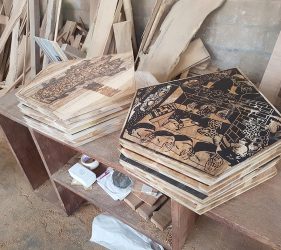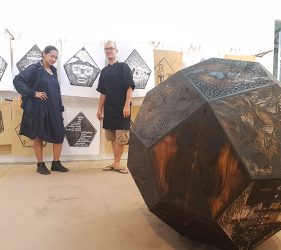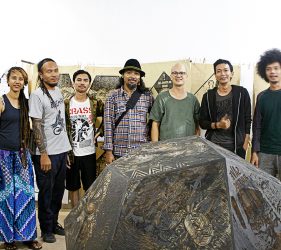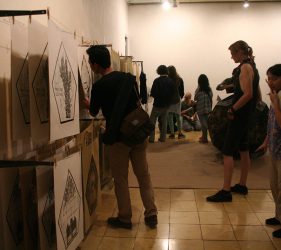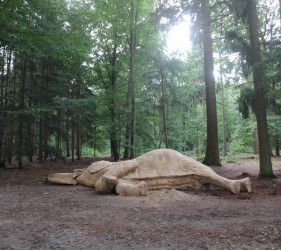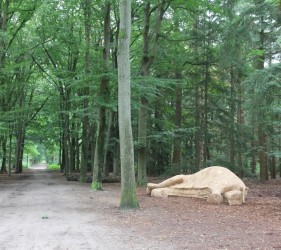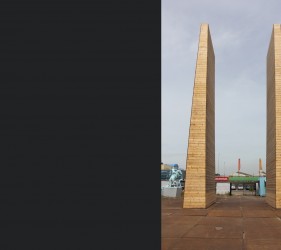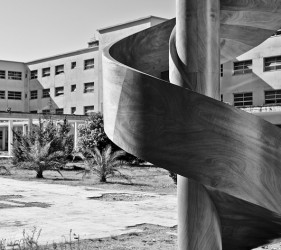In the artist-in-residency at Cemeti – Institute for Art and Society in Yogyakarta, Van Braak expanded the scope of his practice to include other personal stories and histories, drawing from an intensive collaboration with local contemporary artists, writers, woodcarvers and activists. This resulted in the work Pentagonal Icositetrahedron (2017), the starting point of the exhibition: a three-dimensional spherical object with 24 sides, each carved design contributed by a different artist. Like a prism, the sphere reflects varying personal, activist statements, that not only overlap but also literally form one whole. Recurring themes are the exploitation of nature and natural resources, industrialisation and land rights. During the exhibition the installation functions as an active printing workshop where all the prints are distributed for free. Participating artists : Akiq AW, Antitank, Ibob Arief, Djuwadi, Fitri DK, Ervance ‘Havefun’ Dwiputra, Satoto Budi Hartono, Agung Kurniawan, Timoteus Anggawan Kusno, Rangga Lawe, Hestu Setu Legi, Maryanto, Prihatmoko Moki, Needle and Bitch, Ipeh Nur, Onyenho, Deni Rahman,Yudha Sandy, Naomi Srikandi, Ignasius Dicky Takndare, Julian Abraham ‘Togar’, Isrol Triono (Media Legal), Bayu Widodo, Muhammad ‘Ucup’ Yusuf.



